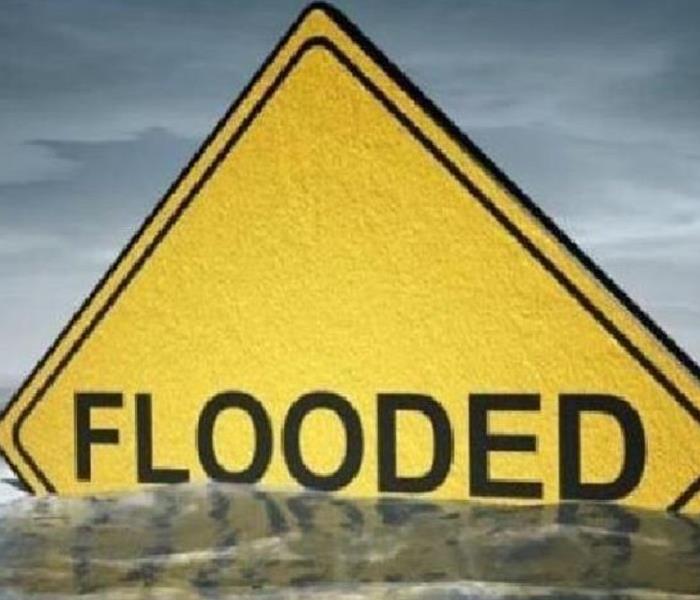Flash Floods Can Be Dangerous
8/7/2018 (Permalink)
By definition, a “flash flood” is a sudden local flood, usually due to extreme heavy rainfall from thunderstorms. Flash floods come quickly and sometimes with little to no warning. Flash flooding can happen so quickly that people are caught off guard. If you encounter high or fast-moving water while traveling, stop, “Turn Around, Don’t Drown.”
Don’t take a chance you may regret.
It’s sometimes easy to underestimate the power and force of moving water. Just six inches of moving water can knock you down, and one foot of moving water can sweep away a vehicle. People can be caught in their cars and swept downstream causing serious injuries and even death. Many of these drowning deaths each year are due to careless drivers and can be prevented, but too many people continue to ignore and drive around barriers that warn them of flooded roadways. Even driving through standing water can be dangerous. If the water isn’t moving, or cannot sweep your car away, it can stall your engine leaving you stranded and causing long-term damage to it.
Am I safe from flooding if I live Downtown?
A lot of people live in downtown Indianapolis and should be aware of possible flash floods. Flooding can happen almost anywhere, even in urban areas because of the impenetrable ground. The rain water cannot soak into the ground due to the impervious nature of concrete and the lack of open soil in urban environments. Massive amounts of water run-off can then overwhelm the sewer systems. Sewers can quickly become clogged by debris resulting in the water to backup and then flood. If you’re caught in a flash flood, stay safe and in your car if possible, and use your emergency kit.
Some items your emergency kit may include:
- Water- one gallon per person for at least three days.
- Food- at least a three day supply of non-perishable food.
- Battery powered or hand crank radio
- Flashlight.
- Extra batteries.
- Candles.
- Phone chargers.
- Road flares.
- Rain ponchos.
- Tarp.
- Wet wipes.
- A whistle to signal for help.
So while I write this blog as content for our website, I also hope that by reading this you will think twice next time you see a flooded roadway and turn around. It’s best if you take a few extra minutes and find an alternate route to your destination. So remember to "Turn Around, Don’t Drown," someone out there will be glad you did.






 24/7 Emergency Service
24/7 Emergency Service
